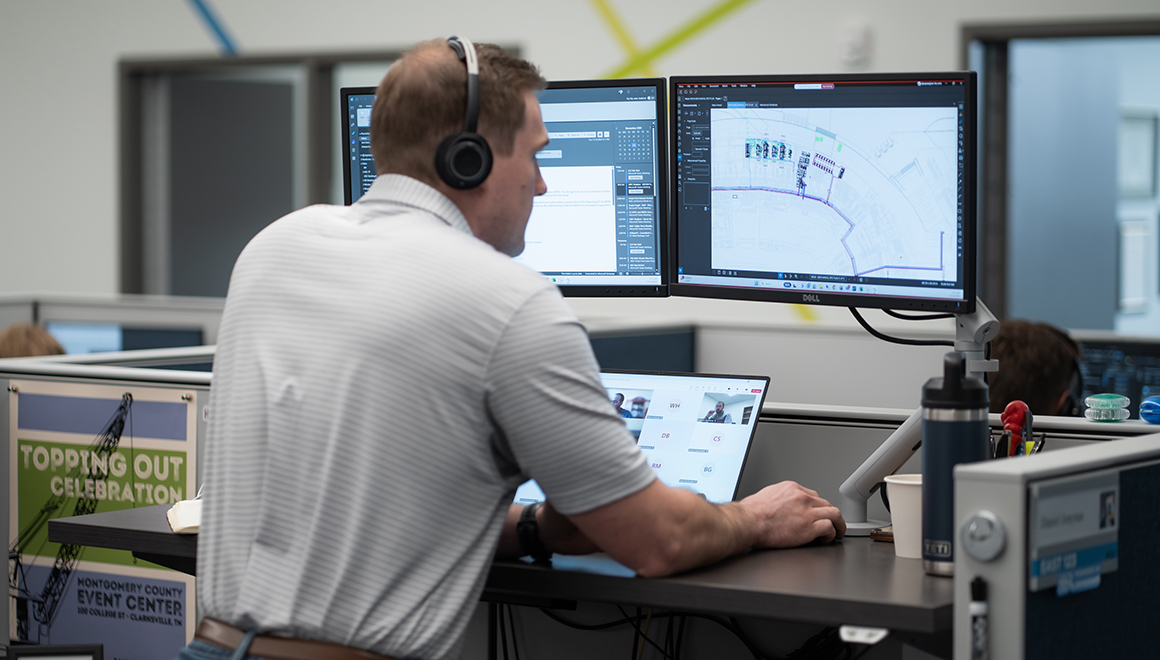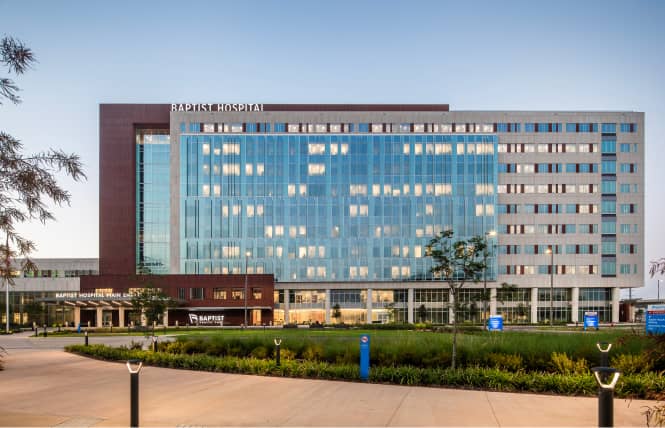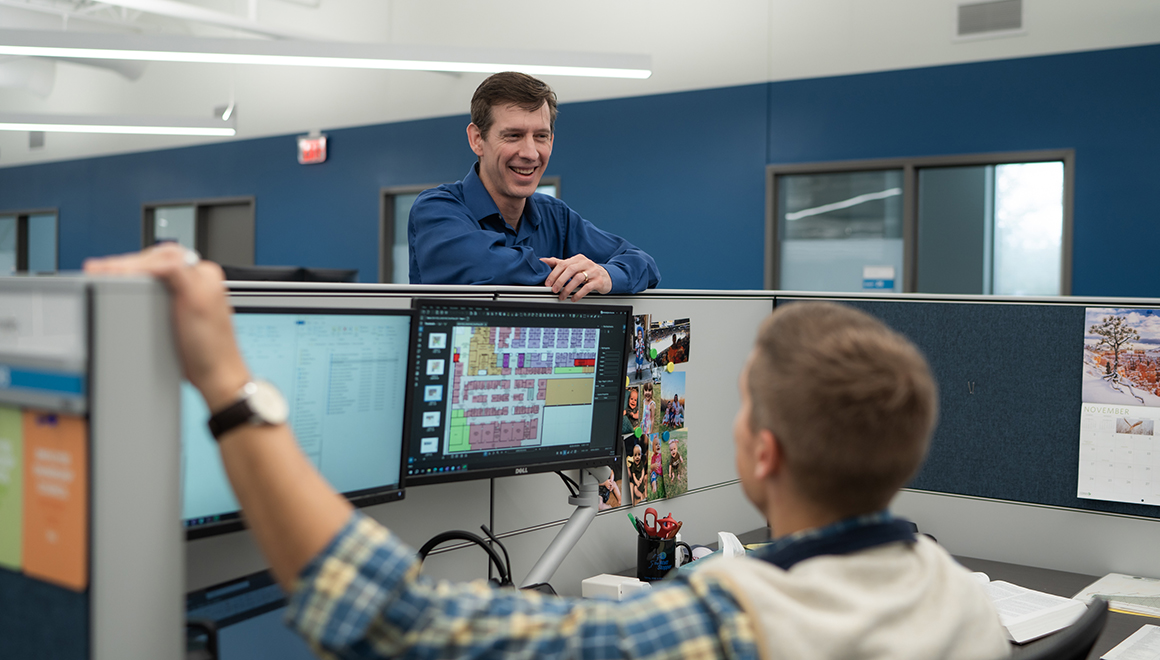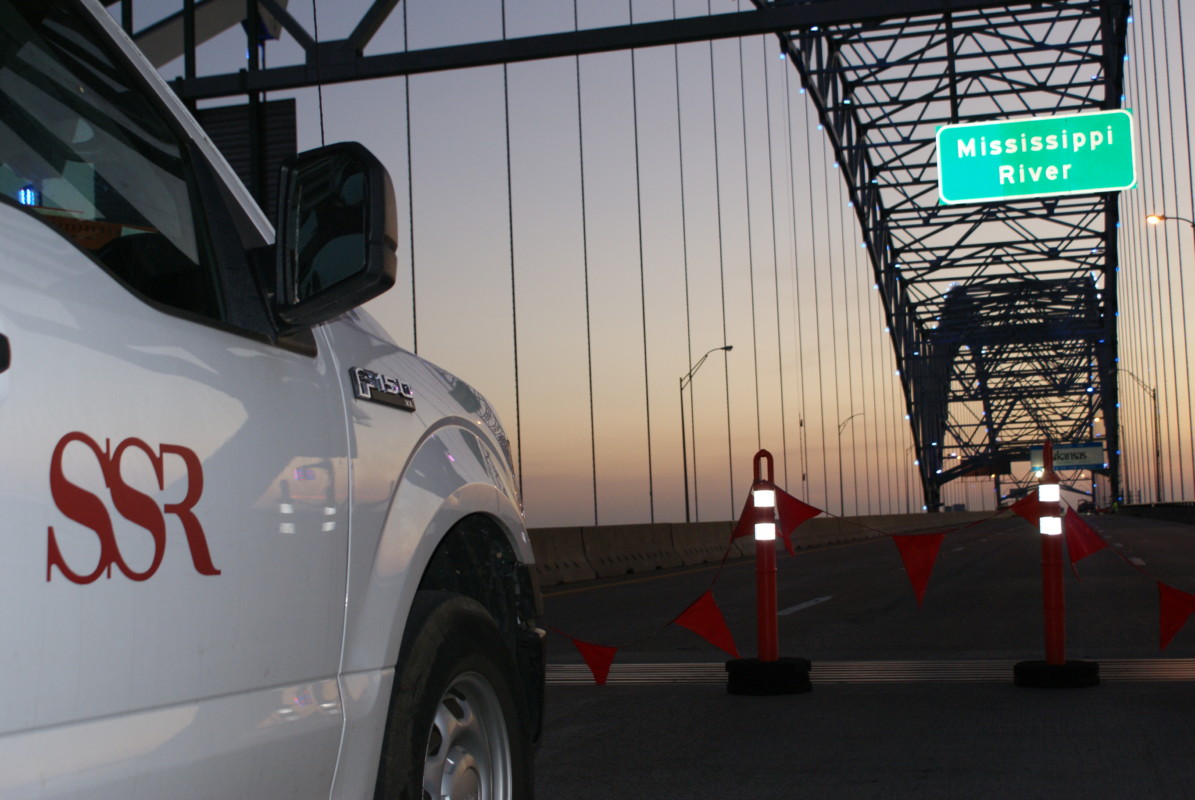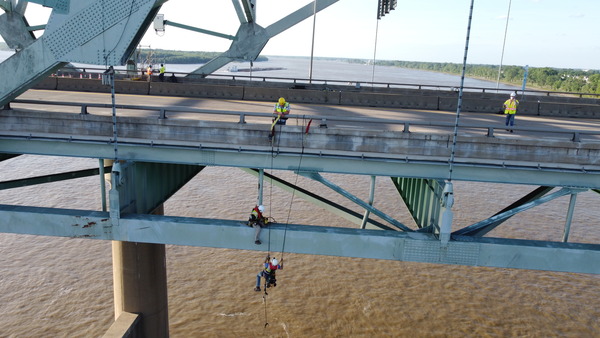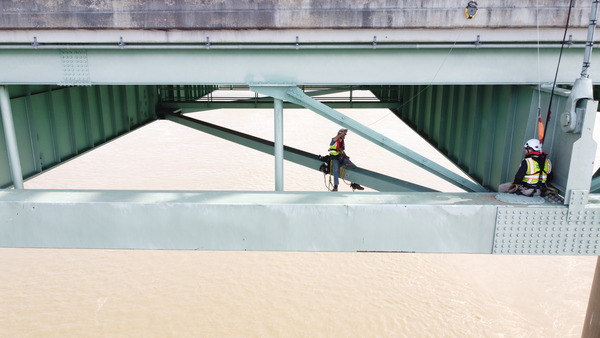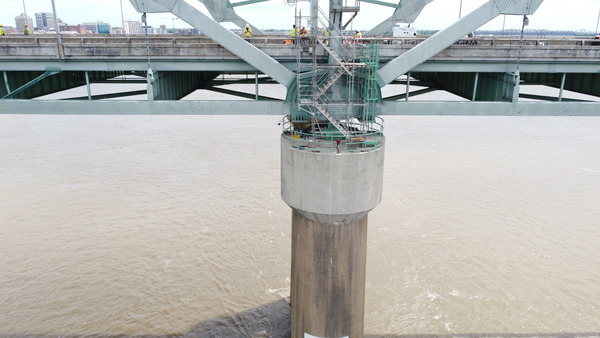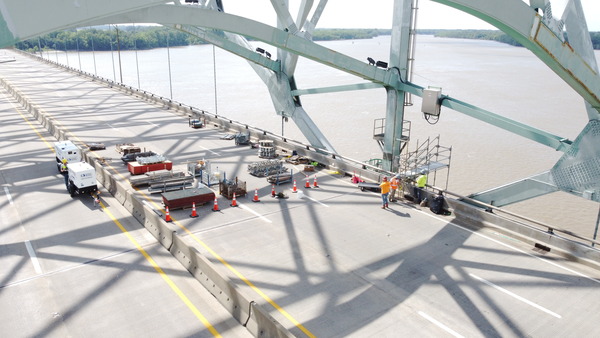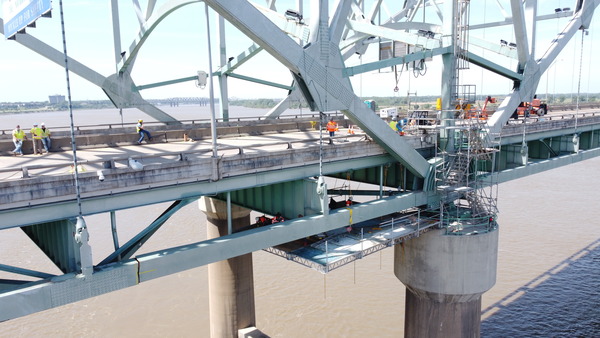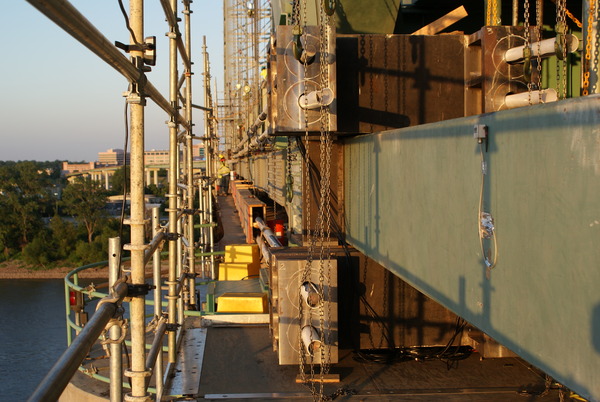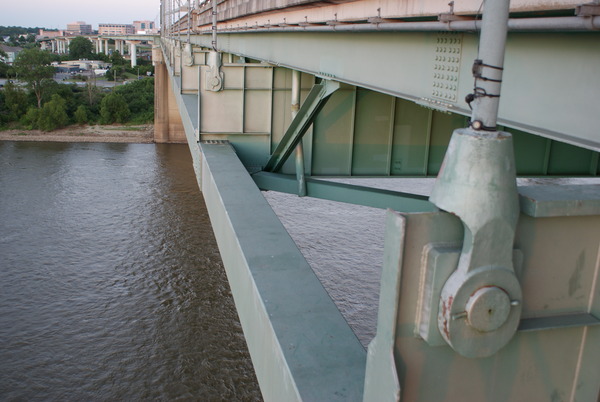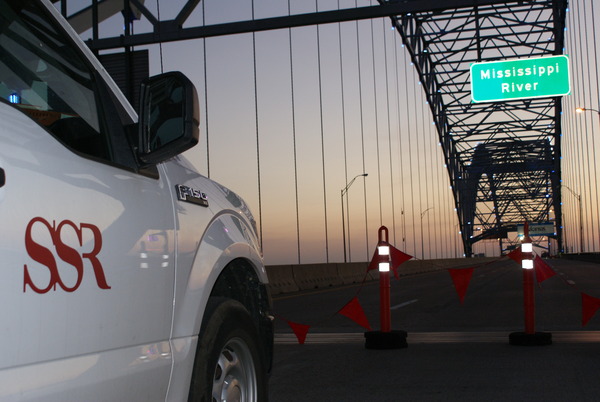Expedited and emergency repair of the iconic bridge connecting Arkansas and Tennessee ccross the Mississippi River.
The fracture was discovered in May with all repair and construction work completed and vehicle traffic allowed back on the bridge by July.
The monumental Mississippi River slices through the United States, serving as a byway for industry and a distinct landmark for middle U.S. Almost as iconic as the river itself are the bridges that traverse the river, connecting states and cities that are naturally separated by the water. For travelers going east along Interstate 40 towards Memphis, TN, the Hernando de Soto Bridge is the first to welcome them to the birthplace of Rock and Roll, Beale Street Blues, and barbecue – the great state of Tennessee.
As a connection between Arkansas and Tennessee, the bridge is monitored by the Arkansas Department of Transportation (ARDOT) with direct support from the Tennessee Department of Transportation (TDOT). Through a routine inspection by the DOTs, a mechanical fracture was discovered, and the bridge was closed to all traffic for immediate repair. The DOT staff evaluated the damage to determine the best solution for repair, reinspection, and reopening.
Fortunately, our team held an on-call inspection contract with the Tennessee Department of Transportation (TDOT) and stepped on the job to provide construction engineering and inspection (CEI) and UAV drone services. We were supported by subconsultants Fisher Arnold and Buchart Horn. TDOT also held an emergency construction contract with Kiewit Infrastructure Group, which performed all repairs.
We worked directly with the project team, TDOT, and ARDOT to expedite and complete the three-phase approach to repair the bridge guarantee safe travel. The phases encompassed the following:
Phase 1
Temporary plates were installed to make a permanent repair and our team was onsite 24/7 during this initial phase to provide CEI services. We also provided UAV inspection of the I-55 bridge on the detour route during this initial phase.
Phase 2
Temporary post tensioning rods were installed, and the temporary plates were removed. Permanent splice plates were installed, the temporary post tension rods removed, and the new splice plates were installed and inspected by our team to complete the repair of the fractured section. Together with our partners, we worked as the eyes and ears of TDOT to provide 24/7 inspection during this phase. The repair work concluded in early July.
Phase 3
After the discovery of the initial fracture, additional inspections were performed on the entire bridge. Additional areas for repair were identified as a safety precaution. This work was completed in July and the bridge successfully reopened to the public.
Close collaboration between our team, the project team, and stakeholders – including TDOT, ARDOT, Fisher Arnold, Buchart Horn, and Kiewit Infrastructure Group – allowed for an expedited schedule. The fracture was discovered in May with all repair and construction work completed and vehicle traffic allowed back on the bridge by July.
